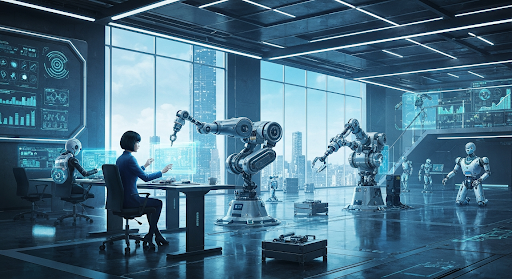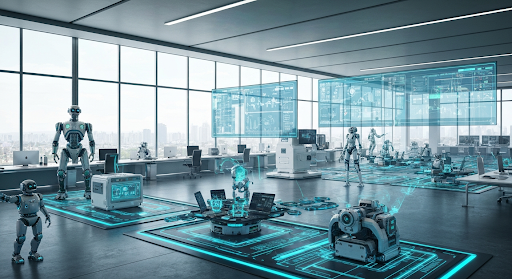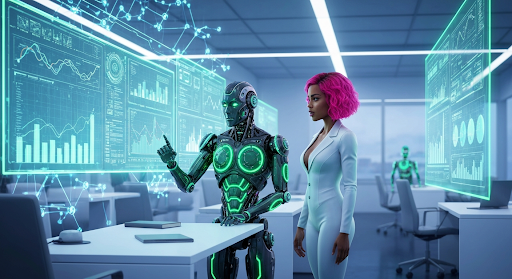Key Benefits of Implementing Robots Automation Solutions
Key Highlights
- Robots automation and robotic process automation (RPA) streamline repetitive tasks, boosting efficiency and accuracy for both digital and physical processes. Popular software platforms for implementing robotic process automation include UiPath, Automation Anywhere, and Blue Prism, which provide robust tools for managing and automating a wide range of business processes. Artificial intelligence and machine learning are making automation solutions smarter, enabling intelligent automation that adapts to changing environments.
- Artificial intelligence and machine learning are making automation solutions smarter, enabling intelligent automation that adapts to changing environments. To develop a smarter strategy for adopting robots and automation solutions, businesses should start by assessing their current production line and identifying areas where intelligent automation, such as industrial robots or collaborative robots, can bring the most value. They should also ensure that any new technology works seamlessly with human workers, providing proper training and support for smooth integration. Industrial robots and collaborative robots (cobots) are transforming production lines and warehouses, working alongside human workers to enhance safety and productivity. By continuously evaluating their automation strategy and staying updated on advancements in artificial intelligence and machine learning, businesses can make informed decisions and maximize the benefits of automation.
- Industrial robots and collaborative robots (cobots) are transforming production lines and warehouses, working alongside human workers to enhance safety and productivity.
- Process automation reduces operational costs, minimizes human error, and frees employees to focus on creative or strategic activities.
- Real-world applications include automated material handling in logistics, quality control, and even surgical assistance in healthcare.
- The benefits of RPA and robots automation are driving digital transformation across industries, paving the way for future innovation.
Introduction
Today, robot automation is redefining the way businesses operate. By blending business process automation and intelligent automation, companies are streamlining repetitive tasks and enhancing productivity. Robots take on mundane or hazardous jobs, while software bots automate digital processes, leading to fewer errors and quicker workflows. As organizations adopt these advanced tools, they gain a competitive edge in efficiency and safety. This shift toward automation is not just a trend—it's reshaping all sectors, creating space for human workers to engage in more strategic roles.
Understanding Robots and Automation Solutions
Automation solutions encompass a wide range of technologies, from software robots that handle data and workflows to programmable machines used on factory floors. Robotic process automation (RPA) stands out as a powerful tool for automating routine computer-based tasks, such as data entry or customer service, allowing employees to focus on more valuable work.
In industrial settings, programmable machines—better known as robots—are used to perform repetitive or hazardous tasks with precision. The central difference lies in the application: software robots automate digital processes, while physical robots automate tasks in the real world. Both approaches, however, aim to optimize efficiency and reduce human intervention in routine operations.
Key Concepts: Robots vs. Automation
The terms “robots” and “automation technology” are often used interchangeably, yet they describe distinct concepts. Robots are programmable machines designed to perform specific tasks, often mimicking human intelligence in physical environments. In contrast, automation technology is a broader field, covering both hardware (like robots) and software that enable processes to run with minimal human input.
Industrial automation generally uses machines to control and optimize manufacturing and production processes. For example, an automated conveyor system in a warehouse may not involve robots, but it still reduces the need for human intervention. Meanwhile, industrial robots are capable of performing complex tasks like welding, assembly, or inspection with higher precision than manual labor.
Understanding how these approaches are used in industry is key. Robotics brings flexibility and adaptability, while automation as a whole focuses on enhancing efficiency. Together, they create robust solutions that address the needs of modern manufacturing, logistics, and even financial services. Wondering how these distinctions affect your operations? The answer depends on your business goals and the specific tasks you aim to automate.
Roles in Modern Industries
In today’s industries, the relationship between human workers and physical robots is evolving rapidly. Intelligent automation lets robots take over repetitive, strenuous, or hazardous tasks, which protects employees from injury and frees them for more skilled work.
The use of robots extends across assembly lines, packaging, and material handling, often working side-by-side with people. Rather than replacing jobs outright, automation solutions shift the focus of the workforce toward managing, maintaining, and programming these advanced systems. For example, a human worker may now supervise a fleet of robots performing product sorting, instead of doing the sorting manually.
While some fear job loss, the reality is more nuanced. Automation changes job roles, requiring new skills in robotics programming, process automation, and data analysis. As a result, employees can transition into higher-value positions, supporting digital transformation while ensuring that both robots and people contribute to business growth.
Evolution of Robots and Automation in Business
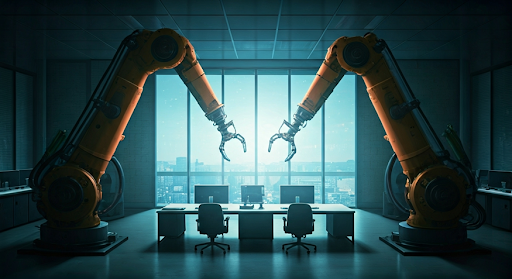
Over time, robots and automation technologies have transformed from simple programmable machines to advanced, AI-driven automation systems. The digital transformation across industries is driven by automation software and new technologies that optimize every aspect of the business process.
Today, companies rely on intelligent automation to boost productivity, reduce costs, and stay competitive. As these tools evolve, they reshape how work is done—making businesses more agile and enabling new levels of innovation. Next, let’s review how these technologies developed and where they’re headed.
Historical Milestones and Technological Advances
The journey of automation and robotics began with early mechanical devices and has progressed through significant advances in computer science and automation systems. Each milestone has pushed industries closer to efficient, high-speed production.
The integration of computer technology, artificial intelligence, and machine learning now allows robots and automation systems to make decisions in real time, adapt to changes, and predict equipment failures before they occur. This ongoing evolution enables businesses to respond quickly to market shifts.
| Timeline | Technological Advances | Industry Impact |
|---|---|---|
| 1940s-60s | First programmable machines; basic automation | Increased speed, repetitive task automation |
| 19070s-80s | Industrial robots in manufacturing | Precision assembly, reduced labor costs |
| 1990s | Computer-based automation, software robots | Automation of digital business processes |
| 2000s | Machine learning, intelligent automation, RPA | Smarter systems, less human error, new use cases |
| 2010s-present | AI-powered robotics, collaborative robots (cobots) | Flexible, safe automation; human-robot collaboration |
As technology advances, robots and automation continue to enhance productivity and safety, setting the stage for further transformation.
Current State and Future Trends in the United States
In the United States, automation systems and industrial robots have become standard across manufacturing, logistics, and service industries. Companies deploy collaborative robots alongside human teams, increasing flexibility and output while ensuring workplace safety.
The current landscape is marked by the integration of artificial intelligence and machine learning into automation solutions. These intelligent tools allow for real-time data analysis, predictive maintenance, and process optimization, streamlining everything from supply chain management to quality control.
Looking to the future, experts predict the expansion of robots into new sectors such as healthcare and agriculture. “Robots and automation will continue to reshape the workforce, creating new opportunities and enhancing human capability,” says Jeff Burnstein, President of the Association for Advancing Automation. Businesses that adapt quickly will not only stay ahead of competitors but also drive innovation in their industries.
Types of Robots Used in Automation
There are several types of automation solutions, with industrial robots and collaborative robots (cobots) leading the way. Industrial robots are the backbone of manufacturing and logistics, handling tasks such as assembly, welding, and packaging with unmatched speed and accuracy. These machines are often stationary and perform repetitive tasks along the production line.
Collaborative robots, in contrast, work directly with human employees in shared spaces. Their design prioritizes safety and adaptability, making them ideal for dynamic environments that require frequent adjustments. Together, these automation systems drive innovation in warehousing, logistics, and beyond.
Industrial Robots vs. Collaborative Robots (Cobots)
Industrial robots operate autonomously within a structured production environment, excelling in repetitive tasks that require precision and speed. They often contribute significantly to process automation, minimizing human error and enhancing efficiency. In contrast, collaborative robots, or cobots, are designed to work alongside human workers, leveraging the power of artificial intelligence and machine learning. These programmable machines augment human intelligence, allowing for seamless interaction in complex tasks while maintaining safety. The growing use of cobots represents a shift towards intelligent automation, blending human intervention with robotic capabilities for the modern workspace.
Applications in Warehousing, Logistics, and Beyond
Warehousing and logistics have seen a surge in automation, with physical robots now handling much of the heavy lifting. Automated guided vehicles (AGVs) and robotic arms sort, move, and package goods rapidly, reducing reliance on manual labor and improving throughput.
Robots excel in use cases where speed, accuracy, and safety are essential. For instance, in e-commerce distribution centers, robots pick and pack thousands of items daily with minimal error. These systems are often integrated with warehouse management software for seamless tracking and process optimization.
Beyond logistics, robots are making an impact in sectors like healthcare, where they assist in surgeries, and in agriculture, automating repetitive physical processes like planting and harvesting. The flexibility of automation solutions means they can be adapted to nearly any environment, continually driving advancements in efficiency and reliability.
Core Benefits of Implementing Robotics Automation Solutions
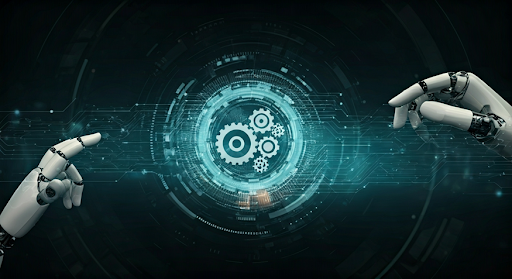
Adopting robotics automation solutions brings a host of benefits, from increased efficiency to cost savings and higher accuracy. The integration of machine learning and intelligent automation allows robots and software bots to handle both simple and complex processes, enabling businesses to scale operations and adapt quickly to market changes.
RPA implementations minimize human error, reduce operational costs, and improve safety. By automating routine or hazardous tasks, companies empower their workforce to focus on innovation and strategic problem-solving, creating a more dynamic, resilient business environment.
Increased Efficiency, Accuracy, and Output
One of the primary benefits of intelligent process automation is its ability to increase efficiency and output while improving accuracy across operations. Robots and RPA solutions work tirelessly, handling tasks 24/7 without fatigue or distraction, which is impossible for human workers.
Key advantages include:
- Consistent, error-free execution of repetitive tasks, reducing the risk of human error.
- Streamlined workflows that speed up production cycles and deliver products faster.
- Real-time data collection and analysis, allowing immediate process improvements.
- Enhanced scalability; automation systems can ramp up or down in response to demand shifts.
Real-world examples abound: In automotive manufacturing, robots assemble vehicles with remarkable precision. In retail warehouses, robots pick and pack orders with speed and accuracy that far surpass manual efforts. These results help businesses meet customer expectations and remain competitive.
Enhanced Safety and Reduced Operational Costs
Implementing automation technology leads to a safer production environment by removing workers from potentially hazardous tasks. Robots can manage dangerous materials, operate in extreme conditions, and handle repetitive tasks that might cause injury over time.
With robots taking on routine and risky work, companies see a reduction in workplace accidents and health-related absences. This not only improves safety but also boosts overall morale and job satisfaction among employees.
Additionally, automation solutions substantially lower operational costs. Robots and RPA systems require less maintenance than manual labor, optimize resource usage, and can be scaled as needed. “Automation doesn’t just cut costs—it creates a safer, more productive environment for everyone involved,” says Rodney Brooks, robotics entrepreneur. This financial and operational impact is a major driver behind the widespread adoption of robots automation across industries.
Conclusion
In summary, implementing robots automation solutions offers a myriad of advantages that can transform your business operations. From increasing efficiency and accuracy to enhancing safety and reducing operational costs, the benefits are compelling for any organization looking to stay competitive in today's fast-paced market. As technology continues to evolve, understanding the types of robots available and their applications can help businesses make informed decisions that align with their goals. Embracing automation is not just about keeping up; it's about paving the way for innovation and growth. If you're ready to explore how robotics can revolutionize your business, get in touch for a consultation today!
Frequently Asked Questions
What is Robotic Process Automation (RPA) and how does it work in business?
Robotic Process Automation (RPA) uses software robots to automate repetitive tasks within business processes, enhancing efficiency and accuracy. By mimicking human actions, RPA integrates with existing systems to streamline workflows, reduce operational costs, and free up employees for more complex activities.
How do robots and automation impact jobs and the workforce?
Robots and automation shift job roles, automating repetitive or hazardous tasks and allowing human workers to focus on higher-value, creative, or technical responsibilities. While some positions may be reduced, digital transformation often creates new roles in robotics programming, maintenance, and process automation.
What challenges should businesses consider before implementing robots automation solutions?
Common challenges include the upfront costs of RPA implementations, the complexity of integrating new software solutions, and the need for ongoing human intervention in complex use cases. Businesses must also address workforce training to ensure smooth adoption and long-term success.

